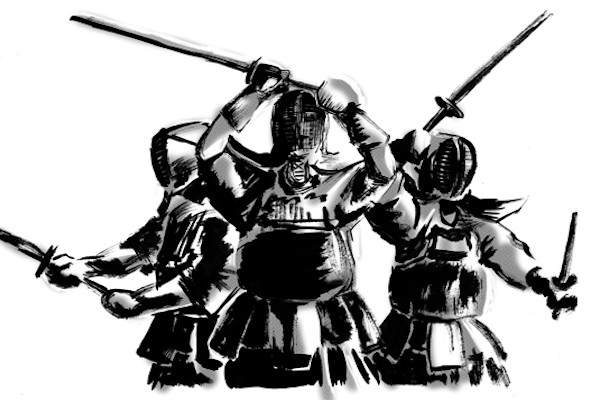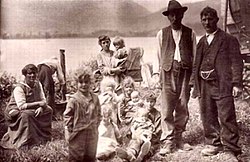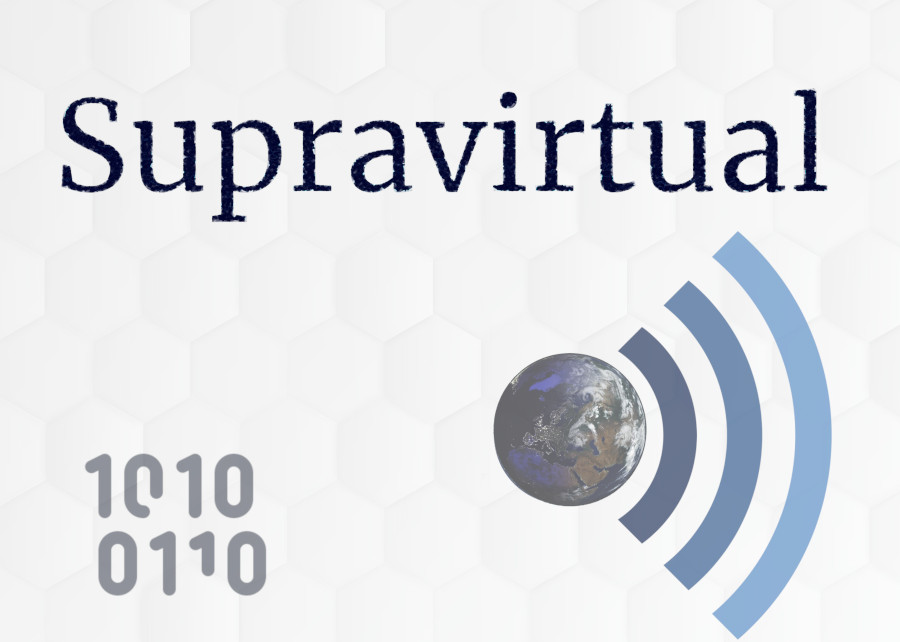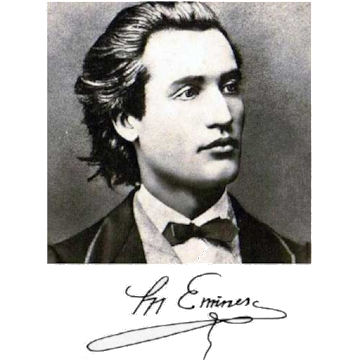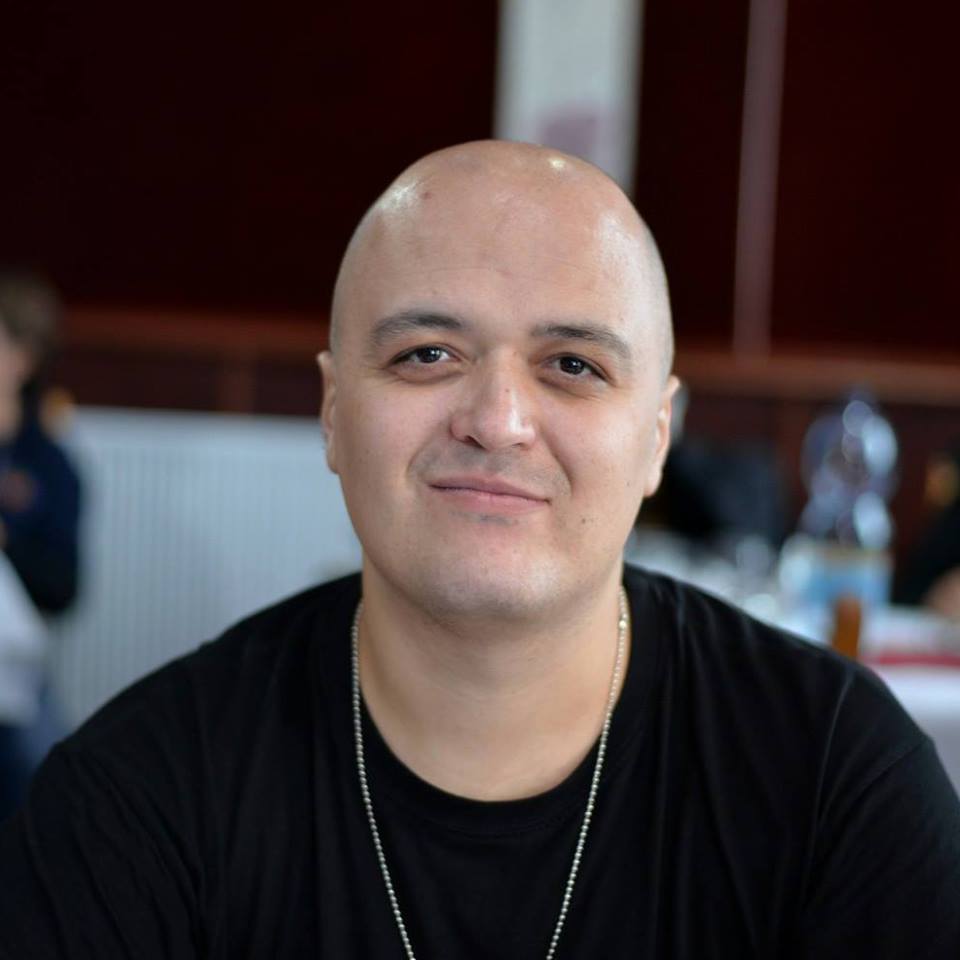Romania has had a long history of science fiction from the end of the 19th century.
This article summarises the highlights up to 1990
The first Romanian science fiction works were influenced by Western European literature and especially the "astronomical novel". Romania\'s first SF novel is considered to be In anul 4000 sau O calatorie la Venus [In the year 4000 or A Voyage to Venus] (1899) by Victor Anestin. Its plot is set in the 4th millennium when two scientists build a rocket and fly to Venus. There they discover a technocratic society that is very advanced but whose citizens have no feeling: there is the notion that perfection can be achieved through the complete eradication of feelings. It is a society unafflicted by wars and disease and unrestricted by laws, and it seems ideal. Yet in the novel\'s dramatic end, the people from Earth destroy the electronic machinery that keep the society and its citizens\' emotions under control.
The next most significant SF novels appeared in 1914: Un roman in Luna [A Romanian on the Moon] by Henric Stahl and O tragedie cereasca [A Celestial Tragedy], again by Victor Anestin.
In the inter-war period, genre authors were chiefly attracted to the fantastic, as best rendered by Mircea Eliade.
Things changed radically after 1950, when under Soviet control, Romania underwent a forced transformation process of its social, economic and cultural structure. The Romanian writers were required to reflect in their work the social and scientific accomplishments of the communist area within the so-called \'socialist realism\' trend. Censorship was everywhere: the Russian-Soviet model was imposed and the works of most of Romania\'s writers of the previous period, and relating to nearly all genres, were banned. Paradoxically these restrictions favoured the spreading of the SF literature which the authorities considered \'harmless\', and a means of technical and scientific education. Meanwhile for the readers it was a way of escaping the immediate reality of communist drudgery. From the literary perspective, the communist era was dominated by popular science magazines and the famous Colectia Povestirilor Stiintifico-Fantastice [Science Fiction Story Collection], which was first published in 1955 and continued uninterrupted until 1974 (466 issues). It became the core around which Romanian fandom formed. The major authors of this period were: Sergiu Farcasan, Radu Nor, Ion Marin Stefan, Victor Kernbach, Ion Manzatu, Romulus Barbulescu and George Anania, Constantin Cublesan, Mircea Oprita and Vladimir Colin. The main novels of this time were O iubire din anul 41.042 [A Love Affair in the Year 41,042] (1959) by Sergiu Farcasan (and this has been virtually continually in print especially in Romania\'s Francophone area), A zecea lume [The Tenth World] (1963) by Vladimir Colin, Atacul cesiumistilor [The Attack of the Cesiumists] (1963) by Sergiu Farcasan, Ferma oamenilor de piatra [The Stone Men Farm] (1969) by Romulus Barbulescu and George Anania, Argonautica (1970) by Mircea Oprita.
Va cauta un taur [A Bull Is Searching for You] (1969) - a Eurocon-award winner in 1972 - is considered the most original Romanian science fiction novel of the 20th century. It is an SFnal, futuristic, re-working of a Greek legend. Its author, Sergiu Farcasan, is a Bucharest-born prose writer who studied medicine in Timisoara. His novel concerns the \'Absolute Machine\' and it explores the tension between human nature and artificial intelligence. There are two leading motifs, the bull and the labyrinth. The company Jupiter & Son, located in a sky-scraper called Olimpic (for which read Olympic), makes plans that upsets Cretan businesses. Minos requests the services of Dedalus, a famous Irish architect who is well aware that the walls of the palace he has built "have ears". At Minos\'s court the readers discover several famous characters - Hercules, Theseus, Aphrodite, Hermes - who are allegedly Greek spies involved in political scandals. Dedalus is obsessed with building the perfect machine. His model for this is the human brain that he believes to be a three-level labyrinth. In this Machine, people get lost forever as prisoners of their own ignorance. There is also the idea of a society of mechanical bulls who, though dependent on the Absolute Machine, conspire against it, a fact illustrated in the second part of the novel, which is a metaphoric description of a cybernetic existence. In the third and last part, the author creates a political plot in which those in power and the opposition confront each other because of the same Absolute Machine.
In 1974, because of both economic (the side effects of the oil crisis upon eastern European communist countries) and political reasons (exaggerated totalitarian rule), Colectia Povestirilor Stiintifico-Fantastice ceased publication and Romanian science fiction writers regrouped in SF societies. These had been established a few years earlier and coincidentally 1969 saw the founding of Romania\'s first three SF societies: The Martians and Solaris in Bucharest, and H.G. Wells in Timisoara.
The first Romanian SF convention took place in Bucharest in 1972. It was, in fact, a meeting of the societies of Bucharest, Craiova and Timisoara. The following conventions, called RomCons, were organised every year until 1994 when that year\'s national convention took place as part of Romania\'s first Eurocon in Timisoara. However the last RomCon of the communist period was previously organised in 1989 a scant month before the anticommunist revolution and again in Timisoara. As was then usual that communist-era convention was under strict control of the authorities. The chief consequence of this was that every aspect of its programme was supervised by representatives of the authorities.
Although closely watched by the communist authorities Romania\'s SF conventions of the time were financed by the State and this enabled them to take place. The RomCons were in fact cultural events of great importance. In the 1980\'s, they not only brought together over 50 societies and hundreds of participants: writers and fans, but also artists, musicians, scientific researchers, philosophers - even some of whom the communist regime did not approve. According to the then official records, in 1989 the number of the societies had increased to 80 with a total of about 4,000 members. Some regularly went to EuroCons in other countries and there were even a few Romanian Eurocon Award winners. Meanwhile the RomCons also organised national competitions whose winners were allowed to publish in the official cultural periodicals or the state publishing houses.
From with 1980, the RomCons followed a standard programme that lasted three days and included a number of regular items: a debate on the state of SF literature and art, a round table on themes of \'political correctness\' (peace and disarmament, the human dimension of science, the impact of new technologies - all inspired by the politics of the communist authorities), film screenings, plastic arts exhibitions, night time readings, and the exchange of books and fanzines from connected fields. It is worth mentioning that the SF societies were the only organisations in Romania that had their own non-communist (but not dissident) publications. One of the strengths of these SF conventions were their guests of honour who were sometimes cultural and scientific personalities not so much favoured by the communist regime. They gave talks on taboo topics such as the relation between scientific research and religion, patterns of post-communist societies, environmental challenges etc. Remember this is all the more remarkable as all of Romania\'s SF activities were financed by the communist authorities. Parts of these talks were published in Anticipatia Almanac (which itself won a Eurocon award in 1987) as the \'official\' publication of Romanian fandom. The RomCons themselves were organised in cities with the most active SF societies, namely: Timisoara, Craiova, Iasi, Sibiu, Oradea, Lugoj, Cluj-Napoca, Pitesti etc. The 1983 convention was an exception as originally it was to have been held in Bucharest but the authorities cancelled it at the last minute for reasons that have never been understood; however, they did not take repressive measures against the organisers or the participants, the latter having arrived in the capital before the cancellation, and who were still able to meet albeit unofficially.
About 300-400 people attended a RomCons between 1980-1989. Of these, 100-150 were official delegates chosen by the societies based on their size and activity. A constant presence was Ion Hobana, the expert historian of the Romanian SF. Among the constant participants were the representatives of the periodical Science and Technology, whose editor-in-chief, Ioan Albescu, was the official leader of the fandom, or major science promoters such as Alexandru Mironov.
During communism, the Romanian fans\' access to Western SF books and films was restricted. Generally, bookshops did not sell SF by foreign authors as these were considered dangerous because of the ideas they contained. However the American Reading Rooms that belonged to the university libraries were a chance to get in touch with Western literature of all sorts, including SF. Romanian fans heard of Western films and books and RomCons provided a glimpse of what was going on in the Western world of SF literature, film or art in general, besides the chance to make friends and socialize. Having said this not all the RomCons attendants were really SF fans, at least not in the beginning; some of them only attended such conventions once, others came for the sake of the atmosphere and the chance to travel and have a break: generally, travel and accommodation expenses were paid by the authorities, so people took advantage of that. But some of these \'tourists\' in the Romanian SF fandom later became true SF fans or even writers. Nonetheless on the whole during communism the sense of national fandom was quite strong.
A typical manifestation of the Romanian fandom was the annual two-week National SF Workshop or Camp (participants stayed in tents) that also organised recreational activities in addition to SF literature and art workshops. There were also a number of annual regional conventions besides the RomCons. Another aspect of Romanian fandom of the time were fanzines. Even in the difficult times, when the Romanian press was under strict governmental control, several SF societies were able to publish their own annual fanzines, the only unofficial publications in the country. Judging from the Eurocon awards they received, the most significant were Paradox (H.G.Wells SF society in Timisoara), Helion [Alpha Particle] (Helion, Timisoara), Fantastic Magazin (Quasar, Iasi), Omicron (Henri Coanda, Craiova). The Quasar SF society from the city of Iasi also published a monthly newsletter called SF Contact. The H. G. Wells and Helion SF societies from Timisoara published together the only journal of literary criticism in Romania, Biblioteca Nova. From 1981 to 1992 saw the publication, with help from the state-owned periodical Stiinta si Tehnica [Science and Technology], the annual Almanac Anticipatia, which was the most important cultural manifestation of the Romanian fandom.
In the final communist period 1974-1989 , some of the major Romanian SF works were Capcanele timpului [The Time Traps] (1974), Dintii lui Cronos [The Teeth of Chronos] (1975) by Vladimir Colin; Pretul secant al genunii, [The Price of the Abyss] (1974) by Adrian Rogoz; Noptile Nemoriei [Nights of the Memory] (1974) by Mircea Oprita; Verde Aixa [Green Aixa] (1976) by Horia Arama; Himera [Chimera] (1979) by Gheorghe Sasarman; Istorii Insolite [Unusual Stories (1980) by Ovidiu S. Crohmalniceanu. The major SF academics of this period (and subsequently) were Ion Hobana, Florin Manolescu, Cornel Robu and Mircea Oprita. Several official cultural periodicals published science fiction, but the number of books (both by Romanian and foreign authors) decreased every year.
In the last years of communism there were just two series of SF novels published. The first was under the banner of the \'Fantastic Club\' from the Albatros Publishing House, Bucharest, and which won a Eurocon award in 1987 for Romanian authors. The second series was of translations of foreign SF and was called \'Colectia Romanelor SF\' [\'The SF Novels Collection\'] which came out from the Univers Publishing House in Bucharest)
A consequence of the Romanian SF community being so well organised in terms of logistics imposed by the communist regime before 1989, to both fandom as well as professional publishing, was that during the 1989-1991 immediate transition events, many members of SF societies chose to be active in the young democratic society. Most of them became involved in the development of Romania\'s press, some became MP\'s, presidential counsellors, diplomats, state secretaries, county prefects, etc. Others turned to a university academic career or became businessmen. It was a time of change...
This article was a co-operative venture. Much is owed to Laurentiu Nistorescu (SF writer and journalist). Additional information was provided by Dorin Davideanu (Editor of the H. G. Wells Society zine Paradox), Silviu Genescu (SF author and journalist) and translation was undertaken by Antuza Genescu (translator). These good folk are not responsible for any error or inadvertently change in nuance that may have taken place during the final editorial stages in Britain.


